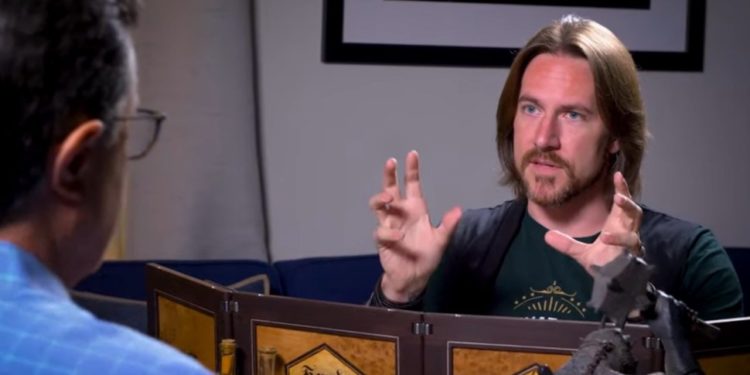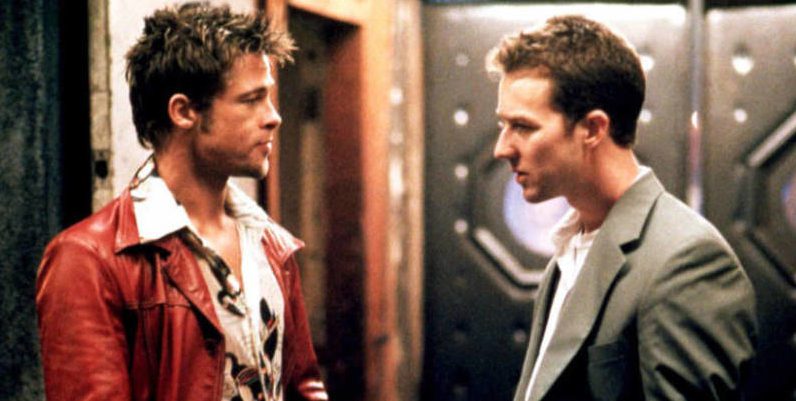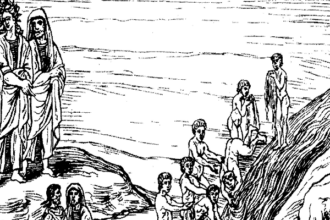Tips on how to run great one on one sessions or campaigns

Thumbnail image from Critical Role’s Stephen Colbert’s D&D Adventure with Matthew Mercer
Lately, I’ve been creating a really interesting concept for a city, and when approached by my players to create a new D&D campaign online while we are doing social distancing, I grabbed everything I had created until then and got it ready. Nevertheless, I wanted to take advantage of our current situation to experiment a bit and run some one on one sessions before the party meets. What was it each character was doing before they met?
I’ve gotten great results from it, and thus I will explain which things I had to take into account to make the session memorable. However, I may need to do some explaining beforehand:
Why would I ever want to run a one on one session or campaign?
Despite being several ways to find a group to play with (you can find some in this article I created, or on Reddit’s /lfg subreddit), there are some people who would rather not play with people they don’t know, or would simply want to run a simple campaign or session for some friend, significant other, or child. Even if you were not the case, I would strongly suggest to try this out at least once or twice. There’s a lot to be learned from running/playing one on one sessions.
What’s more, if the classic D&D games could be compared with the Avengers or Justice League movies as all the heroes come together to defeat the high threats, doing separate one on one sessions with those same characters could be the equivalent of their stand-alone movies. The player doesn’t waste time as their decisions aren’t discussed by no other player. Gametime becomes more dynamic, and the player gets to feel like the star of its own film. As this was not enough, how often is it that someone talks to you for 2-4 hours straight to make you feel like a superhero? You can also use these sessions to have side stories with some of the characters, for example, when doing downtime.
How can we make it work?
D&D is a TTRPG intended to be played with approximately 3-6 players. It can be played with more people, just like you can play it with less, but some modifications may be needed. In order for the session/campaign to not flop I took a look at how other people handled the one on one games. WotC just recently introduced a way to do so with the Essentials Kit, which primarily focused on giving the player a sidekick. The more I researched, the more examples I found that used similar methods. Another great inspiration was The Blood Hunter Adventure by Anthony Joyce, which added some new things to take into consideration. What’s more, the adventure’s editor (Justice Arman) even created a post-mortem style article talking about the things he considers necessary for creating a one on one adventure. You can read it here. It definitely was of great help to make me understand how to approach this style of play.
However, you are here to learn from my experience so you can have an easier time running one on one games, not writing adventures suited for them. Therefore, here are my top tips on how to do it:
Make it all revolve around the specific player character
We are not creating an adventure in which a fighter battle master may decide to use a longbow, a crossbow, a greatsword, or a rapier. We already know our player and can get to know the player character they are going to be using in the game. It is because we already know this important detail that we can tailor the whole experience around them.
Take a look at their entire character sheet, backstory and get to know which things your player does like most (are they looking forward to having their character sneak around, go Leeroy Jenkins’ style murdering everything on their front, or blasting huge towers with fireballs…?). Once you know all this, you will easily understand the style of play you should be looking to create. If they are playing a wizard and have feather fall prepared, make sure to have a moment in which the player drops on a free fall. If they are playing a paladin, look at their oath and spell selection and maybe if they have mostly combat spells you might think of bringing a rival from their backstory to make an appearance, some douchebag to fight, or even better, an enemy that is a menace, but by killing it you would be making a morally wrong decision (the town mayor for example).
Last but not least, do take into account the abilities and equipment the player character has as well. If they bought ball bearings, it would be nice to add some sections in the session in which the PC may have a chance of using them (a chase for example). If the player character does have the great weapon master feat, have them fight a bunch of monsters with little to no hp so they can make extra attacks.
The Sidekick
I wanted to speak about this topic as soon as I could because creating a sidekick for the PC does seem like the obvious and only choice, but it doesn’t have to be. In two of the three one on one games I’ve run so far I’ve used sidekicks to great success. Nevertheless, I don’t consider them essential to create the best kind of experience. It may be tricky to fully understand when it is you need them, and that is what I will try to explain:
Depending on the vibe and/or “genre” you want to give to your session, as well as the character build the player has, you can easily understand the session you should prepare for them. As I said above, we need to create a whole story for the specific character, and maybe having a sidekick that can fail at sneaking during stealth missions can become more of a burden than a solution. However, if you are looking for an encounter that may include the player character falling unconscious or taking serious damage, you can a) give the player a sidekick with some way of healing (maybe a healing class, or an archer with a potion of healing), b) make sure the PC is never to take enough damage as to be killed, c) have enemies want the PC alive instead of dead or d) have a reason within your story that solves the mortality problem without making it feel you are going way too easy with them (the Blood Hunter adventure offers a brilliant option, but it’s kind of a spoiler).
The sidekick is not the star
You may have heard of the DMPC term. It is basically the player character DMs sometimes make because they would love to play in a campaign they created, or for some other reason. This often comes together with the fact that the DMPC goes along with the party as an extra character and gets all the best items and favoritism. Sidekicks should obviously be nothing like that. We need them to be with the PC to chat with them, sometimes give hints on what to do, and at times confuse the player on which decision to take (because sidekicks can be wrong on their theories).
You as a DM should be the one controlling the sidekick at all times, leaving all decisions to be taken by the player. The sidekick can suggest things but never take the final decision. This way, if the plan is successful then it will be the player that will feel great for taking the final choice. It’s ok for the sidekick to confront the PC from time to time to generate drama, and I strongly recommend this happening at some time, but you should focus on it being there for the player character whenever they need the sidekick’s help. We want the player to take a liking on the sidekick, so if in the future it were to deal a killing blow to some big evil, for example, the player would feel proud of being their friend (and will feel a tad of ownership of its sidekick’s success).
Pick your path style of play? (linearity)
Once you have established if you are going to be running a campaign, a single session or an entire adventure, and have thought out what it is going to be about, you can decide if your sessions are going to be something more akin to the traditional open-world style of play or not. However, I find linearity (not railroading) to be better for one on one play. The chaotic element of having multiple people in one party easily disappears in this style, meaning it is much easier to know where the story will go. Mind that when I say linearity I don’t mean that there will not be any meaningful choice. Quite the contrary! Decisions should be extremely important, to make the player feel special and make them feel the world changing around them.
In order to create a great story with meaningful choices that perfectly applies to the player character, I suggest planning each session in a pick-your-path way. If you do this, you can focus on creating environments and encounters so they meet the requirements needed for the character to feel extra special. If the character goes on a path and a whole lot of your session gets unused, you can always use that encounter in the future. You shouldn’t have this kind of moment constantly, but having something like this happens once or twice per session is about the right number. The rest of the time, I suggest to plan encounters to work in the way I am about to explain below:
Making the player feel awesome
Before I start with this section, I’ll be talking quite a lot about level design and game design as I consider those aspects essential for this style of play. You can have a better grasp of what I am talking about (and learn a thing or two about how to improve your games) by reading this series of articles. If you are going to be making a whole one on one campaign, you don’t need to have all encounters be as complex as what I am going to say (even though if you do have the time and would like to, it is always appreciated by the player to do so). However, if it is a single one on one session and you are wanting for it to be extra special you should consider having all encounters having these sort of elements in them:
You need to make the level and encounter centered around the player character abilities, equipment, and spells. Make sure to detail there are random props you can imagine the PC being able to use or to detail the place in which some encounter is to take place to have things the player character can take advantage of. Maybe the ceiling of the cave is loose and the PC can make it fall over an enemy with some magic missiles. What about making a guard walk near a cliff, making him very easy to be pushed to his death? These and many other ways to interact with the environment to make the PC feel awesome can be found in the articles I talked about above. By making use of them, you are giving an opportunity to annihilate multiple enemies without the need for a big party. The player will believe you didn’t make it easy on them because of the great number of enemies you placed in their way. Even better! They may even think they outsmarted you (and players love that feeling), when in fact you left all the pieces for them to believe that.
Conclusion
One on one D&D is a kind of experience I believe all DMs and players should try out at least once as an experiment. It creates a totally different feeling than when playing in a group, and what better moment to try this out than now, where you can plan a separate 2 hourish or longer session each day with ease?
Tell me of your best stories running one on one D&D, suggest great adventures you know that do this great, or let’s just chat a bit on how to make a great session in the comments below!
If you liked this
Do you have your whole pirate town ready to run your game, but are looking on some way to make the tavern more interesting? Consider adding some minigames for it! You can find 3 of them over here







